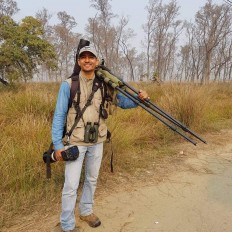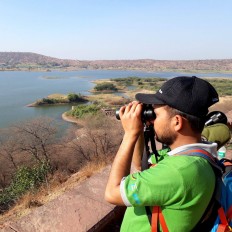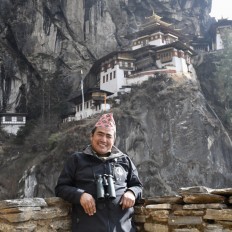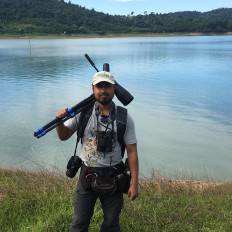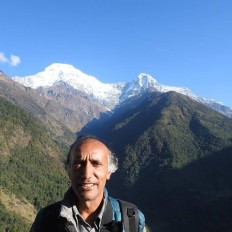Chitwan National Park is the first national park in Nepal. It was established in 1973 and granted the status of a World Heritage Site in 1984. It covers an area of 952.63 km2 (367.81 sq mi) and is located in the subtropical Inner Terai lowlands of south-central Nepal in the districts of Nawalpur, Parsa, Chitwan and Makwanpur. In altitude it ranges from about 100 m (330 ft) in the river valleys to 815 m (2,674 ft) in the Churia Hills.
In the north and west of the protected area the Narayani-Rapti river system forms a natural boundary to human settlements. Adjacent to the east of Chitwan National Park is Parsa National Park, contiguous in the south is the Indian Tiger Reserve Valmiki National Park. The coherent protected area of 2,075 km2 (801 sq mi) represents the Tiger Conservation Unit (TCU) Chitwan-Parsa-Valmiki, which covers a 3,549 km2 (1,370 sq mi) huge block of alluvial grasslands and subtropical moist deciduous forests.
Chitwan has a tropical monsoon climate with high humidity all through the year.[3] The area is located in the central climatic zone of the Himalayas, where monsoon starts in mid June and eases off in late September. During these 14–15 weeks most of the 2,500 mm yearly precipitation falls – it is pouring with rain. After mid-October the monsoon clouds have retreated, humidity drops off, and the top daily temperature gradually subsides from ±36 °C / 96.8 °F to ±18 °C / 64.5 °F. Nights cool down to 5 °C / 41.0 °F until late December, when it usually rains softly for a few days. Then temperatures start rising gradually.
Birds:
Every year dedicated bird watchers and conservationists survey bird species occurring all over the country. In 2006 they recorded 561species (eBird) in the Chitwan National Park, much more than in any other protected area in Nepal and about two-thirds of Nepal's globally threatened species. Additionally, 20 black-chinned yuhina, a pair of Gould's sunbird, a pair of blossom-headed parakeet and one slaty-breasted rail, an uncommon winter visitor, were sighted in spring 2008.
Especially the park's alluvial grasslands are important habitats for the critically endangered Bengal florican, the vulnerable lesser adjutant, grey-crowned prinia, swamp francolin and several species of grass warblers. In 2005 more than 200 slender-billed babblers were sighted in three different grassland types.The near threatened Oriental darter is a resident breeder around the many lakes, where egrets, bitterns, storks and kingfishers also abound. The park is one of the few known breeding sites of the globally threatened spotted eagle. Peafowl and jungle fowl scratch their living on the forest floor.
Apart from the resident birds about 160 migrating and vagrant species arrive in Chitwan in autumn from northern latitudes to spend the winter here, among them the greater spotted eagle, eastern imperial eagle and Pallas's fish-eagle. Common sightings include brahminy ducks and goosanders. Large flocks of bar-headed geese just rest for a few days in February on their way north.
As soon as the winter visitors have left in spring, the summer visitors arrive from southern latitudes. The calls of cuckoos herald the start of spring. The colourful Bengal pittas and several sunbird species are common breeding visitors during monsoon. Among the many flycatcher species the paradise flycatcher with his long undulating tail in flight is a spectacular sight


